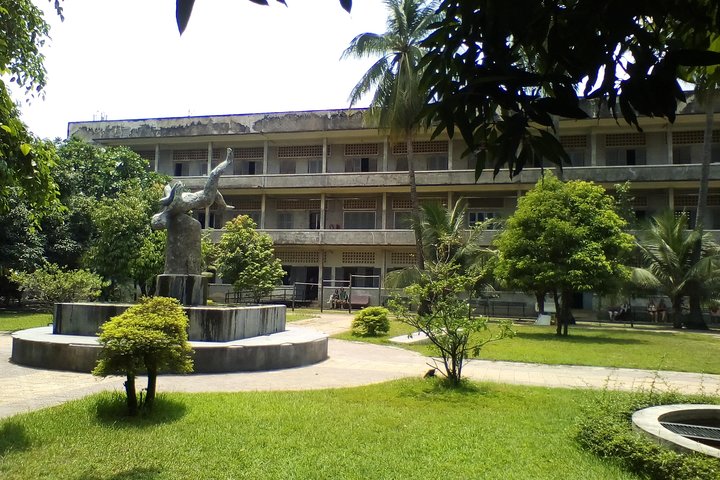Exploring Cambodia’s Resilience: A Journey Through the Killing Fields and Genocide Museum
Drawn by the promise of a profound journey, I ventured to Phnom Penh to explore the Killing Fields and S21 Genocidal Museum. Guided by Lina, whose personal connection to Cambodia’s history added depth to the experience, I found myself immersed in a narrative of tragedy and hope.
A Journey Through Cambodia’s Painful Past
As a cultural consultant and travel writer, I have always been drawn to the stories that shape a nation’s identity. My recent visit to Phnom Penh, Cambodia, was no exception. I embarked on a Private Half Day Tour to the Killing Fields and S21 Genocidal Museum, a journey that promised to be both enlightening and heart-wrenching. Guided by Lina, whose profound knowledge and personal connection to Cambodia’s history added layers of depth to the experience, I found myself immersed in a narrative that was both tragic and hopeful.
The tour began at the Tuol Sleng Genocide Museum, a former high school turned into a center of horror by the Khmer Rouge. Walking through the corridors, I was struck by the haunting photographs of victims that lined the walls. Lina’s storytelling was both factual and deeply emotional, honoring the gravity of the events without sensationalizing them. Her insights into the broader historical and political context helped me understand the magnitude of what had transpired. It was a sobering reminder of the resilience of the human spirit and the importance of remembering the past to build a better future.
Reflecting at Choeung Ek
Our journey continued to Choeung Ek, a site that was once an orchard and a Chinese cemetery before becoming one of the infamous killing fields. The tranquility of the surroundings belied the horrors that had occurred there. As I walked among the mass graves and the memorial stupa containing thousands of skulls, I felt a profound sense of loss and reflection. Lina’s thoughtful guidance allowed for moments of silence and contemplation, giving me the space to process the weight of the history around me.
The experience was not just about understanding the past but also about connecting with the present. Lina shared stories of Cambodia’s resilience and hopes for the future, painting a picture of a nation striving to heal and rebuild. Her openness to questions and her ability to navigate such difficult topics with grace made the tour not just informative but deeply moving. It was a reminder of the power of storytelling to bridge the gap between history and humanity.
A Must-Do Experience in Phnom Penh
For anyone visiting Phnom Penh, the Killing Fields and Genocide Museum are essential stops. The tour, especially with a guide like Lina, offers a profound and human understanding of Cambodia’s history. The experience is accessible, with even ground and shaded areas, making it suitable for most visitors. However, the emotional impact is significant, and it’s important to approach it with mindfulness and respect.
As I left Phnom Penh, I carried with me the stories of those who had suffered and the hope of a nation determined to rise from its past. The tour was not just an exploration of history but a journey into the heart of Cambodia’s resilience. It was a powerful reminder of the importance of remembering and honoring the past to build a brighter future. If you find yourself in this vibrant city, don’t miss the opportunity to engage with its history in such a meaningful way.







































